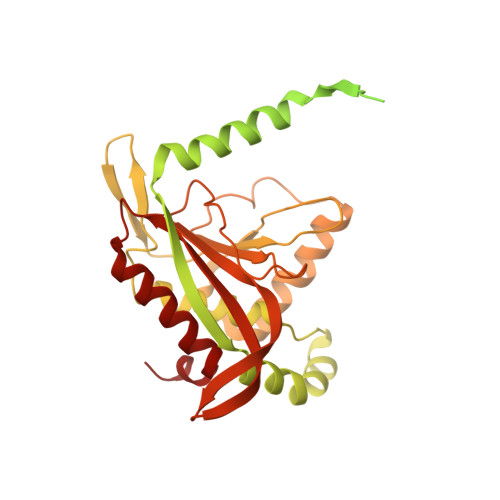Molecular architecture of the mammalian 2-oxoglutarate dehydrogenase complex.
Zhang, Y., Chen, M., Chen, X., Zhang, M., Yin, J., Yang, Z., Gao, X., Zhang, S., Yang, M.(2024) Nat Commun 15: 8407-8407
- PubMed: 39333186
- DOI: https://doi.org/10.1038/s41467-024-52792-7
- Primary Citation of Related Structures:
8X02 - PubMed Abstract:
The 2-oxoglutarate dehydrogenase complex (OGDHc) orchestrates a critical reaction regulating the TCA cycle. Although the structure of each OGDHc subunit has been solved, the architecture of the intact complex and inter-subunit interactions still remain unknown. Here we report the assembly of native, intact OGDHc from Sus scrofa heart tissue using cryo-electron microscopy (cryo-EM), cryo-electron tomography (cryo-ET), and subtomogram averaging (STA) to discern native structures of the whole complex and each subunit. Our cryo-EM analyses revealed the E2o cubic core structure comprising eight homotrimers at 3.3-Å resolution. More importantly, the numbers, positions and orientations of each OGDHc subunit were determined by cryo-ET and the STA structures of the core were resolved at 7.9-Å with the peripheral subunits reaching nanometer resolution. Although the distribution of the peripheral subunits E1o and E3 vary among complexes, they demonstrate a certain regularity within the position and orientation. Moreover, we analyzed and validated the interactions between each subunit, and determined the flexible binding mode for E1o, E2o and E3, resulting in a proposed model of Sus scrofa OGDHc. Together, our results reveal distinctive factors driving the architecture of the intact, native OGDHc.
Organizational Affiliation:
Ministry of Education Key Laboratory of Protein Science, Tsinghua-Peking Joint Center for Life Sciences, Beijing Advanced Innovation Center for Structural Biology, School of Life Sciences, Tsinghua University, Beijing, China.














